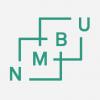The Alaska Water Sewer Challenge was created to develop on-site a water and wastewater system that was less expensive than conventional piped infrastructure. This lecture highlights the water reuse system designed by the University of Alaska Anchorage. As of summer 2018, the system includes treatment processes that are biological and physical/chemical producing water suitable for direct potable reuse.
Over 3,300 rural Alaskan homes lack running water and a flush toilet. Most of these homes are located in 30 “unserved” villages. Many homes and villages with service depend on aging and deteriorating piped and haul systems. The lack of in-home water and sewer service in rural Alaska causes severe skin infections and respiratory illnesses. Residents of Southwest Alaska suffer rates of invasive pneumococcal disease (IPD) that are among the highest in the world. To correct this public health problem, agencies have funded conventional, community-wide piped and truck haul systems. Although these systems work, they are expensive to construct, and many communities cannot afford their high operational costs. Many households in rural Alaska use a toilet known as a "honey bucket". A plastic bag lined bucket collects urine and feces. Then, plastic bags of feces from honey buckets are disposed in a sewage lagoon.
To improve the health of rural Alaska residents, a research and development effort to find better and more affordable ways to deliver drinking water and sewage disposal services to rural Alaska was created.
At the end of this lecture students will have:
- A basic understanding of the status of communities in Rural Alaska that are unserved
- Gained insights into challenges and successes for rapid on-site greywater treatment
- Understood that while technology can be engineered, public acceptance may be a much greater challenge



